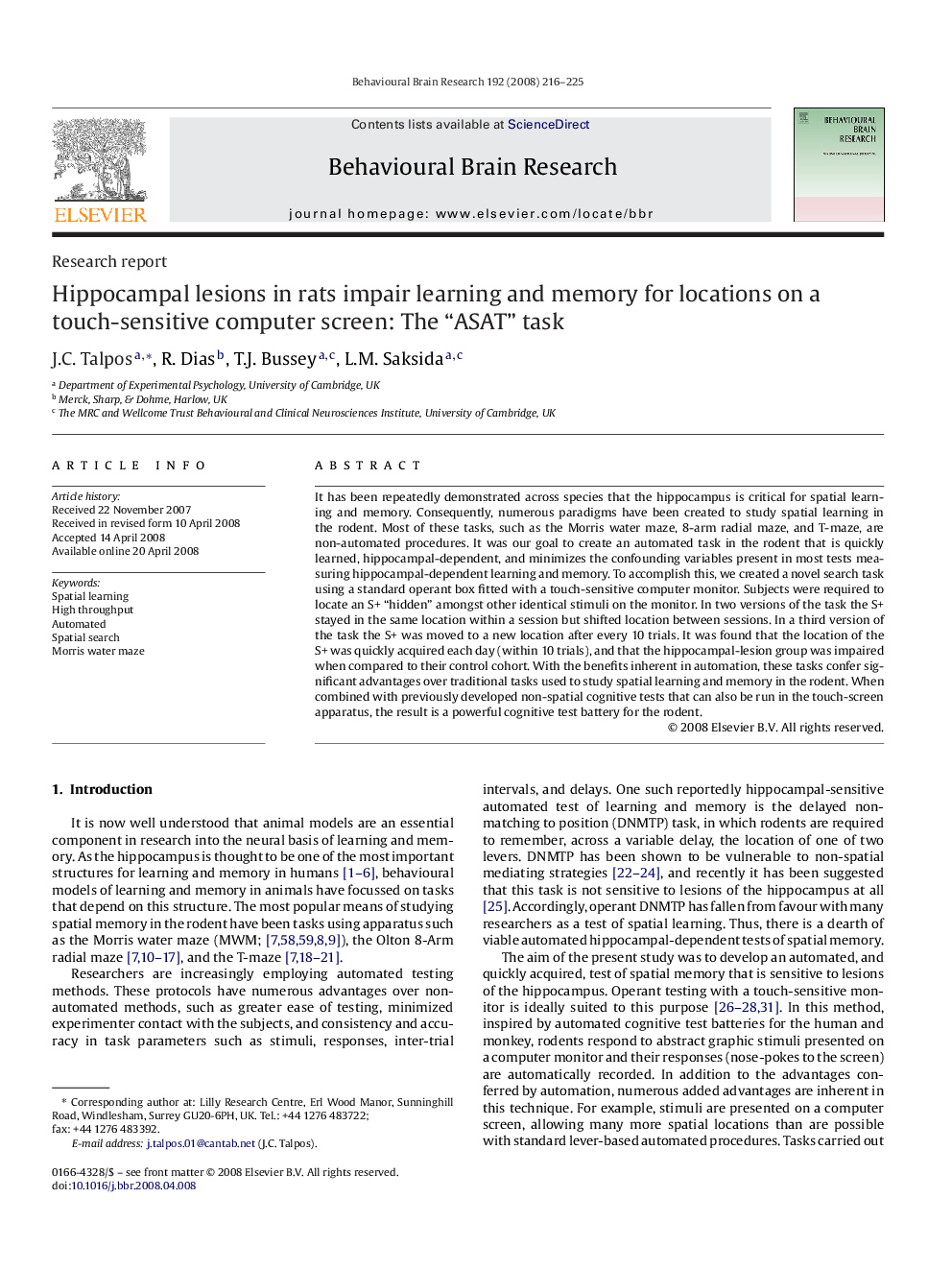| Article ID | Journal | Published Year | Pages | File Type |
|---|---|---|---|---|
| 4314976 | Behavioural Brain Research | 2008 | 10 Pages |
It has been repeatedly demonstrated across species that the hippocampus is critical for spatial learning and memory. Consequently, numerous paradigms have been created to study spatial learning in the rodent. Most of these tasks, such as the Morris water maze, 8-arm radial maze, and T-maze, are non-automated procedures. It was our goal to create an automated task in the rodent that is quickly learned, hippocampal-dependent, and minimizes the confounding variables present in most tests measuring hippocampal-dependent learning and memory. To accomplish this, we created a novel search task using a standard operant box fitted with a touch-sensitive computer monitor. Subjects were required to locate an S+ “hidden” amongst other identical stimuli on the monitor. In two versions of the task the S+ stayed in the same location within a session but shifted location between sessions. In a third version of the task the S+ was moved to a new location after every 10 trials. It was found that the location of the S+ was quickly acquired each day (within 10 trials), and that the hippocampal-lesion group was impaired when compared to their control cohort. With the benefits inherent in automation, these tasks confer significant advantages over traditional tasks used to study spatial learning and memory in the rodent. When combined with previously developed non-spatial cognitive tests that can also be run in the touch-screen apparatus, the result is a powerful cognitive test battery for the rodent.
